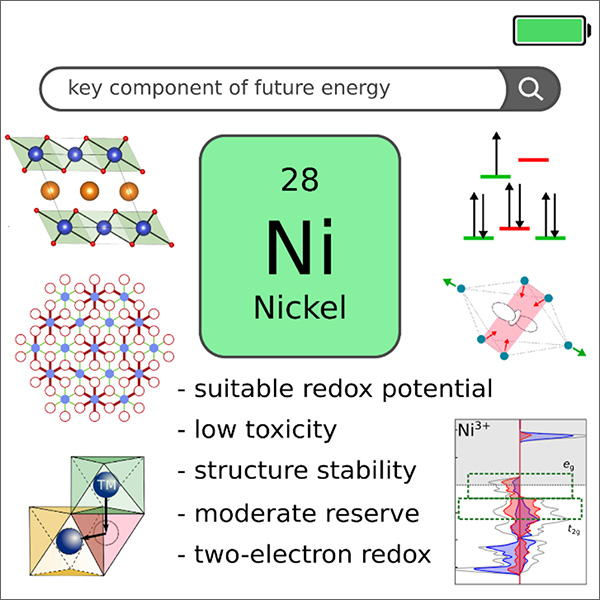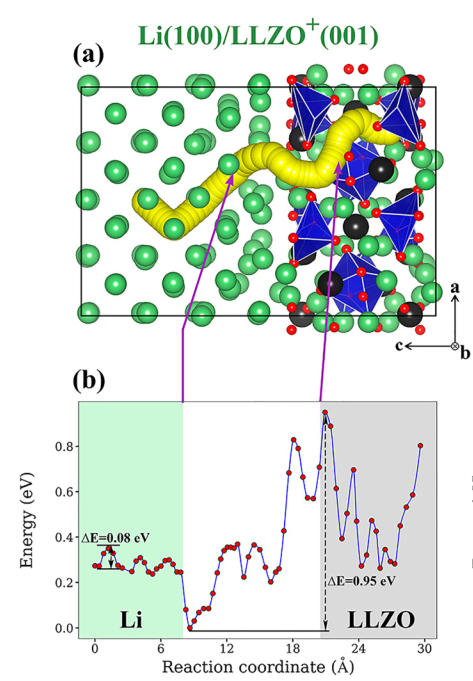1. Development of advanced electrochemical energy storage systems with the help of directional design of local structure and microstructure of electrode materials.
The project is aimed at the design of high-capacity electrode materials and solid electrolytes to create electrochemical current sources with high energy density. The main goal of the project is to establish relationships between electrochemical behavior, local structure and microstructure of materials and to design new materials with defect structures optimized for specific electrochemical energy storage systems. The objects of research are cathode materials for lithium-ion batteries (LIB) based on nickel-enriched complex oxides LiNixMnyCozO2 (NMC), composite anode materials based on graphite with additives of oxidized silicon, and solid electrolytes for lithium-metal batteries with a garnet structure. The project plans to combine modern methods of synthesis and experimental study of microstructure in order to assess changes in structural and microstructural characteristics during cycling and the impact of structural changes on the characteristics of materials. The “synthesis-microstructure-properties” relationships will be revealed using computational methods using density functional theory and molecular dynamics approaches.


The project is funded by Russian Science Foundation Project No. 23-73-30003. https://rscf.ru/project/23-73-30003/
Recent publications:
1) Kartamyshev, A. I., Poletaev, D. O., Boev, A. O., & Aksyonov, D. A. (2023). Weak segregation and accelerated diffusion of Li at twin boundaries in Cu from DFT: Implications for current collectors in Li-ion batteries. Computational Materials Science, 230, 112517. https://doi.org/10.1016/j.commatsci.2023.112517
2) Savina, A. A., Boev, A. O., Orlova, E. D., Morozov, A. V., & Abakumov, A. M. (2023). Nickel as a key element in the future energy. Russ. Chem. Rev, 92, 7. https://doi.org/10.59761/RCR5086
3) Skvortsova, I. A., Orlova, E. D., Boev, A. O., Aksyonov, D. A., Moiseev, I., Pazhetnov, E. M., ... & Abakumov, A. M. (2023). Comprehensive analysis of boron-induced modification in LiNi0.8Mn0.1Co0.1O2 positive electrode material for lithium-ion batteries. Journal of Power Sources, 583, 233571. https://doi.org/10.1016/j.jpowsour.2023.233571
4) Burov, A. S., Boev, A. O., Abakumov, A. M., & Aksyonov, D. A. (2024). Mechanism of Li+ charge transfer at Li/Li7La3Zr2O12 interfaces: A density functional theory study. Physical Review B, 109(4), 045305. https://doi.org/10.1103/PhysRevB.109.045305
2. Effect of the electrode/electrolyte interface structure on the charge transfer kinetics: сomputer simulation and experimental verification.
The electrode/liquid electrolyte interface charge transfer processes will be studied using computer modeling methods. The development of charger carrying conditions is beneficial for designing electrode/electrolyte interfaces, which will enhance current source electrostatic characteristics, particularly at low temperatures. As a result of the project, it is expected to establish the mechanisms of influence of the chemical composition and structure of the electrode/electrolyte interface, as well as the dielectric constant of the electrolyte on the process of charge transfer in layered cathode materials (for example, Li/NaNiO2, Li/NaCoO2), oxide anode materials (for example, LiTi2O4 with spinel structure), as well as well-known polyanionic cathode materials (for example, LiFePO4, KVPO4F), which are widespread among commercial and model compositions of intercalation-type battery electrodes. The goal is to determine the structure and energetics of surface defects in cathode materials, taking into account the influence of the electrolyte, as well as to identify the patterns of their influence on charge transfer in current sources.
The project is funded by Russian Science Foundation Project No. 23-73-01258 https://rscf.ru/project/23-73-01258/
1. To advanced high capacity layered electrode materials for lithium-ion batteries through the understanding of oxidation-reduction processes at the atomic level.
The project is aimed at solving the urgent problem of creating high-capacity secondary electrochemical current sources of the next generation with cathodes based on Li-enriched transition metal oxides. But they have a number of disadvantages, which creates obstacles to their practical use. To solve this problem, the project proposes a combined approach, including modern methods of preparative chemistry, advanced characterization methods and computer modeling within the framework of density functional theory
The project was funded by Russian Science Foundation Project No. 20-43-01012 FWO. https://www.rscf.ru/project/20-43-01012/
Publications:
1) Abakumov, A. M., Fedotov, S. S., Antipov, E. V., & Tarascon, J. M. (2020). Solid state chemistry for developing better metal-ion batteries. Nature Communications, 11(1), 4976. https://doi.org/10.1038/s41467-020-18736-7
2) Morozov, A. V., Moiseev, I. A., Savina, A. A., Boev, A. O., Aksyonov, D. A., Zhang, L., ... & Abakumov, A. M. (2022). Retardation of structure densification by increasing covalency in Li-rich layered oxide positive electrodes for Li-ion batteries. Chemistry of Materials, 34(15), 6779-6791. https://doi.org/10.1021/acs.chemmater.2c00921
3) Abakumov, A. M., Li, C., Boev, A., Aksyonov, D. A., Savina, A. A., Abakumova, T. A., ... & Bals, S. (2021). Grain Boundaries as a Diffusion-Limiting Factor in Lithium-Rich NMC Cathodes for High-Energy Lithium-Ion Batteries. ACS Applied Energy Materials, 4(7), 6777-6786. https://doi.org/10.1021/acsaem.1c00872
4) Savina, A. A., Saiutina, V. V., Morozov, A. V., Boev, A. O., Aksyonov, D. A., Dejoie, C., ... & Abakumov, A. M. (2022). Chemistry, Local Molybdenum Clustering, and Electrochemistry in the Li2+ x Mo1–x O3 Solid Solutions. Inorganic Chemistry, 61(14), 5637-5652. https://doi.org/10.1021/acs.inorgchem.2c00420
2. Atomic-level Understanding of Interface Structure Evolution and Engineering Guidelines for Next Li-ion Solid State Batteries
We explored the correlation of interface structure with Li-ion transport across the interface and phase stability. We studied the effect of introducing barrier layers at the cathode interface to the Li-transport and phase stability. We also studied the Li dendrites growth at the Li-metal anode interface.
The work was a part of The Skoltech – MIT Joint Next Generation Program (NGP).
Publications:
1) Morozov, A. V., Paik, H., Boev, A. O., Aksyonov, D. A., Lipovskikh, S. A., Stevenson, K. J., ... & Abakumov, A. M. (2022). Thermodynamics as a Driving Factor of LiCoO2 Grain Growth on Nanocrystalline Ta-LLZO Thin Films for All-Solid-State Batteries. ACS Applied Materials & Interfaces, 14(35), 39907-39916. https://doi.org/10.1021/acsami.2c07176
3. Search for new materials for gas electrodes of lithium- and sodium-oxygen current sources: predictive computer simulation and experimental testing
Using density functional theory we performed high-throughput screening of cathode material depending on their stability, band gap, surface energies and resistance towards oxidation and passivation and found out a row of potential compounds.
The project was funded by Russian Science Foundation Project No. 19-73-00321 https://www.rscf.ru/project/19-73-00321/
Publications:
1) Boev, A. O., Fedotov, S. S., Stevenson, K. J., & Aksyonov, D. A. (2021). High-throughput computational screening of cathode materials for Li-O2 battery. Computational Materials Science, 197, 110592. https://doi.org/10.1016/j.commatsci.2021.110592
Computational Materials Group (CMG) lead by Prof. D. Aksyonov is developing new electrode materials for metal-ion batteries using computational methods. The supreme ingredient of success is a deep understanding of the material’ properties on the atomic and electronic level, which can be achieved with modeling.
Main directions:
- Computational design of solid/solid and solid/liquid interfaces for metal-ion batteries (Applied Surface Science 537 (2021) 147750)
- Advanced study of defects in electrodes for metal-ion batteries (Inorg. Chem. 2021, 60, 5497−5506)
- Understanding cation migration barriers in oxide and phosphate based cathode materials with DFT calculations (Computational Materials Science 154 (2018) 449–458)
- Development of computational framework SIMAN for high-throughput DFT calculations (https://github.com/dimonaks/siman)
- To advanced high capacity layered electrode materials for lithium-ion batteries through the understanding of oxidation-reduction processes at the atomic level
- Atomic-level Understanding of Interface Structure Evolution and Engineering Guidelines for Next Li-ion Solid State Batteries
- Search for new materials for gas electrodes of lithium- and sodium-oxygen current sources: predictive computer simulation and experimental testing

Figure 1. Easier formation of surface antisite defect in layered oxides discovered with DFT+U oxides. From Applied Surface Science 537 (2021) 147750
Figure 2. Combined DFT + X-Ray + Neutron diffraction refined hydrogen defects in LiFePO4 cathode material. From Inorg. Chem. 2021, 60, 5497−5506
Figure 3. Li diffusion pathways for three classes of crystal structures: (a) spinel, (b) olivine, and (c) tavorite. From Computational Materials Science 154 (2018) 449–458

Figure 4. Change of charge density in Na2FePO4 after extraction of sodium (black spheres). From J. Am. Chem. Soc. 2018, 140, 3994−4003.
